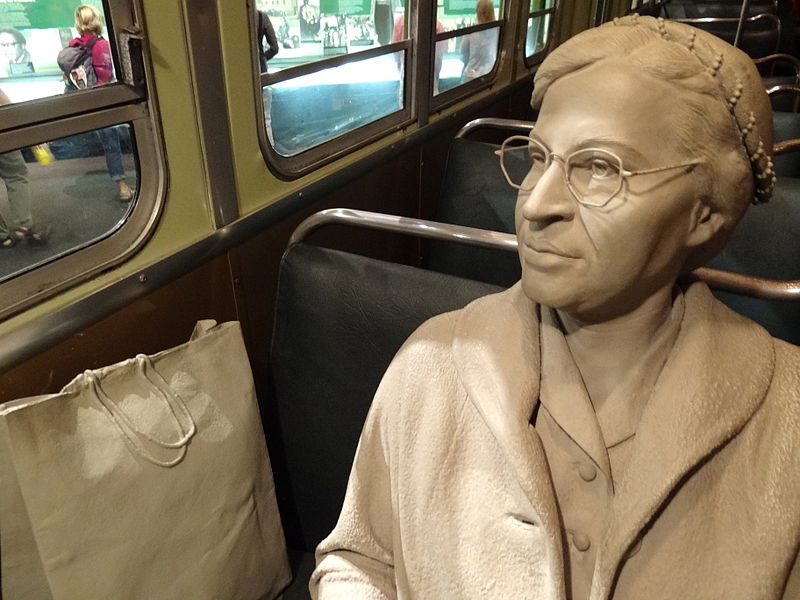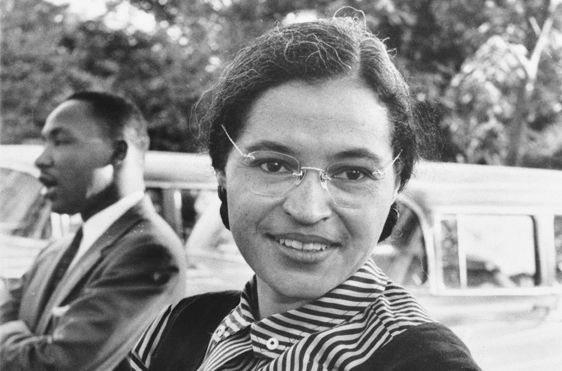Rosa Parks sat down for what she believed
February 24, 2015
During the 1950s, Rosa Louise McCauley Parks sought to bring peace between whites and blacks. Her actions created ripple effects that eventually won major victories for the civil rights movement.
Early Life
Parks was born Feb. 4, 1913, in Tuskegee, Ala.
After her parents separated, Parks lived with her mother and grandparents. Her grandparents were former slaves and were advocates for equality.
Parks attended a segregated, one-room school house that lacked school supplies, including desks. Black students were forced to walk to this school house while white students were bused to their new school house.
Parks continued to attend segregated schools, including the Alabama State Teachers College for Negroes. However, she abandoned her studies when her mother got sick, and Parks later became a seamstress for a shirt factory in Montgomery.
At 19 years old, Parks met and married Raymond Parks, a member of the NAACP.
Soon after, Parks joined the Montgomery chapter of the National Association for the Advancement of Colored People to help get involved in civil rights issues in her community. She later became chapter secretary.
Her Impact
Parks’ determination and confidence lead to a turning point in the civil rights movement.
On Dec. 1, 1955, Parks sat in the designated section for blacks on the city bus in Montgomery. When the front, white-only section of the bus was filled and a white man boarded the bus, the bus driver asked Parks to move so the white man could sit down.
“And of course, I was not in the front of the bus as many people have written and spoken that I was — that I got on the bus and took the front seat, but I did not,” Parks said in an interview for the Academy of Achievement. “I took a seat that was just back of where the white people were sitting, in fact, the last seat.”
Parks refused to give up her seat.
The bus driver called the police, who arrested Parks.

A diorama of Mrs. Rosa Parks sitting in her bus seat in the National Civil Rights Museum.
“And then I asked (the police officer), why did (police) push (blacks) around? And he said, and I quote him, ‘I don’t know, but the law is the law and you are under arrest’,” Parks said.
Parks’ courage motivated other freedom fighters, perpetuating the Montgomery Bus Boycott.
Mr. Jack Linn, U.S. History teacher, said, “She opened up civil rights. She was a leader for rights of African Americans throughout the whole country.”
The day after her arrest, she and many other activists, including the Rev. Dr. Martin Luther King Jr., gathered at a local Baptist church so she could share her story.
Parks’ trial was Dec. 5. On that day, activists decided to not ride the buses as a means of protest.
“When (activists) found out that one day’s protest had kept people off the bus, it came to a vote and, unanimously, it was decided that they would not ride the buses anymore until changes for the better were made,” Parks said.
How Students Feel
Many students know what Parks did and how it has impacted society.
Senior Tyler Gagne is glad Parks was brave, but he does not feel he has the strength to be as brave as her.
“(Parks) asserted her opinion for freedom, and she did what she believed in,” Gagne said. ” I think (her actions) changed a lot equality-wise, like going to school with people of all backgrounds.”
Sophomore Tori Jones knows that Parks would not give up her seat to a white man. Jones thinks Parks’ actions alone did not help end segregation, but they did help society be more confident in what it believes in.
“Maybe today, someone still would not have stood up for what they were believing in,” Jones said. “(Parks’ actions) were motivation for people to speak up.”
BLACK HISTORY MONTH SERIES: This is the second story in a series written by The Eclipse in honor of Black History Month.
